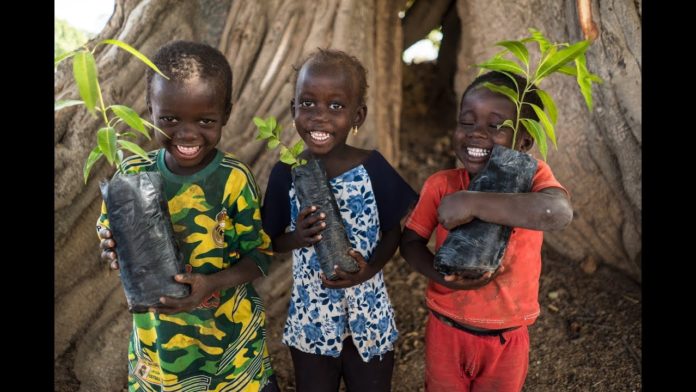 International development nonprofit Trees for the Future (TREES) has pledged to plant 500 million trees by 2025. Their recently released Strategic Growth Plan sets clear pathways to advance their regenerative agriculture approach worldwide.
International development nonprofit Trees for the Future (TREES) has pledged to plant 500 million trees by 2025. Their recently released Strategic Growth Plan sets clear pathways to advance their regenerative agriculture approach worldwide.
“We know we’ve set a lofty goal for ourselves, but it is attainable and it is absolutely vital to the health of our environment and the well-being of people living on dying land,” says TREES Executive Director John Leary. “Many organizations are planting trees but it is important that we put intentionality into our efforts. Five hundred million trees is not an arbitrary number. Our method ensures that we are making a sustainable impact.”
Tree planting is only a piece of Trees for the Future’s work. The organization is heavily focused on the health and prosperity of those affected by deforestation and land degradation. TREES works directly with smallholder farmers, who traditionally use harmful agriculture techniques, and introduces an agroforestry and regenerative agriculture methodology to help them improve their land and livelihoods. To date, the organization has planted 168 million trees in Forest Gardens and in regional reforestation projects. Their goal of 500 million trees equates to 125,000 Forest Gardens and 1 million people successfully planting themselves out of hunger and poverty.
“Our approach is much more complex than simply digging a hole and planting a seed, and that’s why it works,” Leary says. “We show farmers why trees should be a part of their livelihoods and landscapes, and then we teach them how to make that vision a reality.”
The TREES team does not expect to meet the half a billion tree mark on their own; they hope to attract various collaborating partners to join their efforts. The organization’s Forest Garden Training Center provides an array of resources and training materials to partners and the public so that their methodology and strategy can be replicated worldwide.
“When we’re talking about reforesting our planet and establishing sustainable change, it isn’t a competition. We must work together,” says TREES Executive Director John Leary. “We are sharing everything we’ve ever learned from our 30 years of experience to build a movement of driven and informed agroforestry practitioners.”
TREES’ Forest Garden Training Center is free and individuals can use the platform to track their own tree planting efforts. Find it on the Forest Garden Training Center website or through the Google Play app. Read Trees for the Future’s Strategic Growth Plan here and their 30th Anniversary Impact Report.
The public can help Trees for the Future reach their goal by donating. Donating ensures that farmers get training, seeds, and tools to successfully plant and maintain their Forest Gardens.
Source : Africa.com


